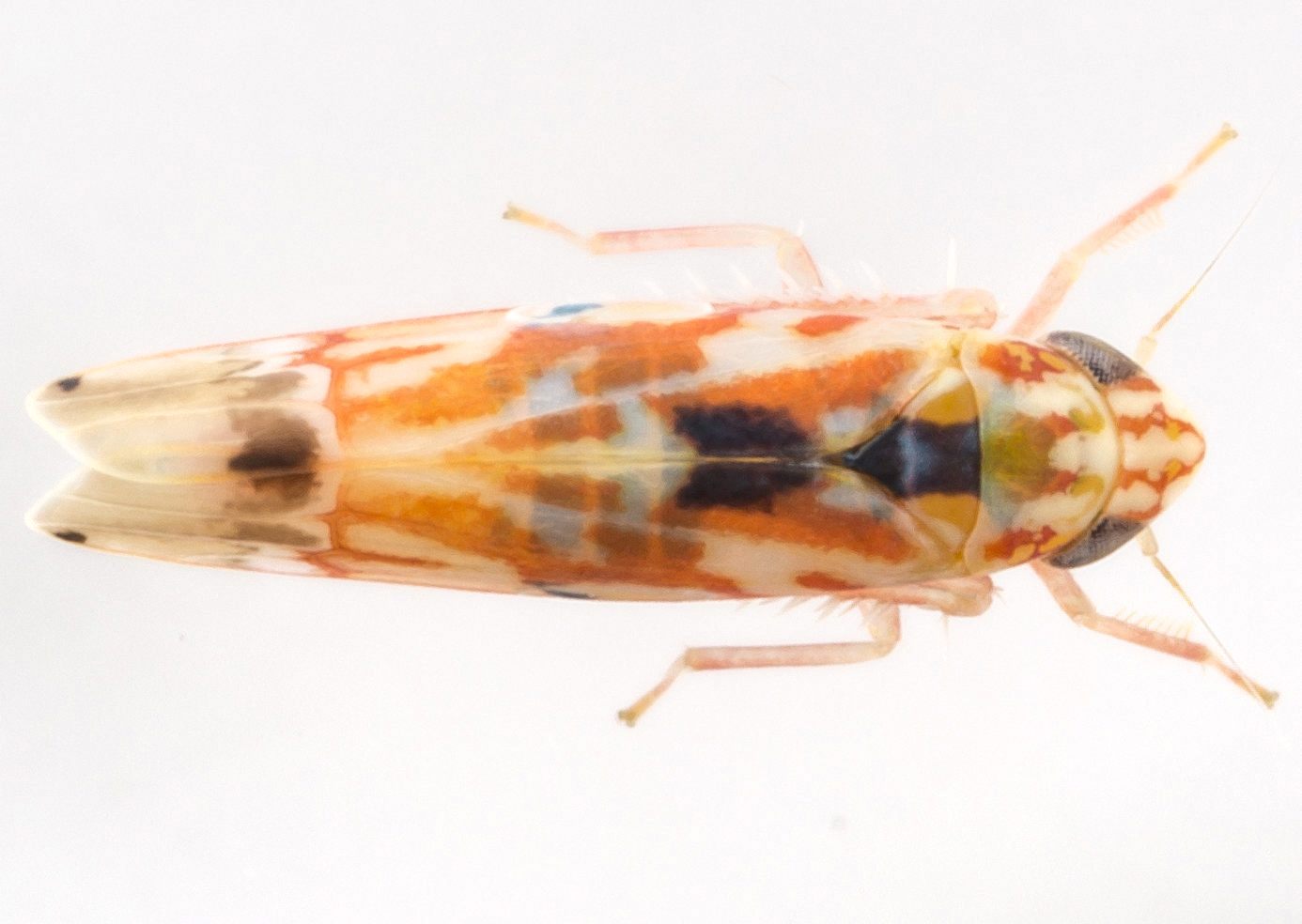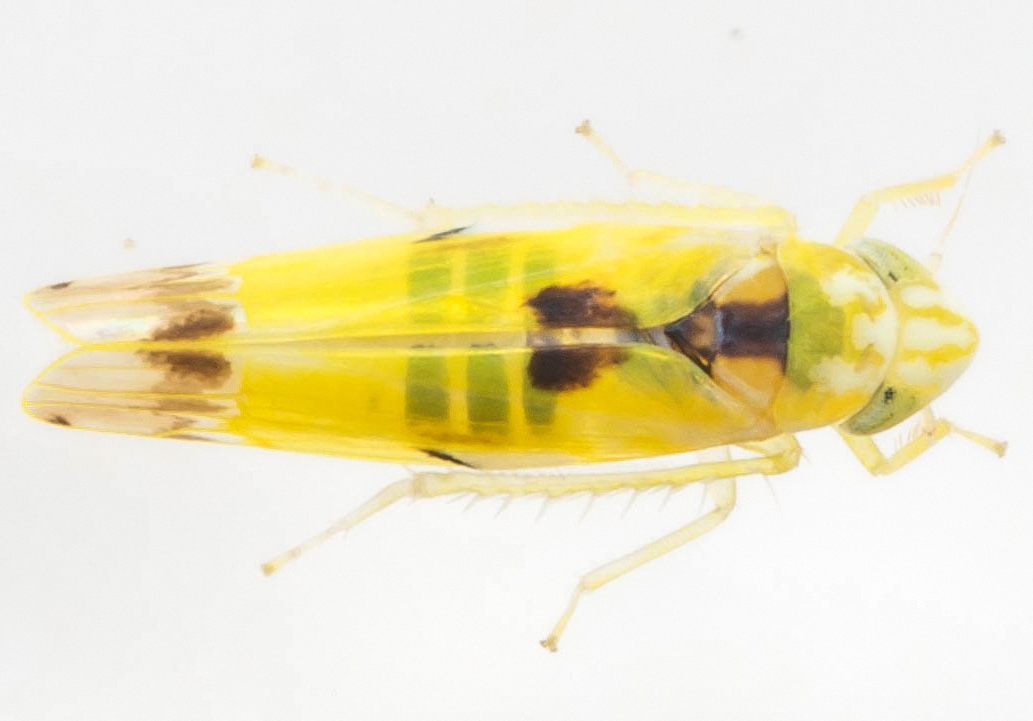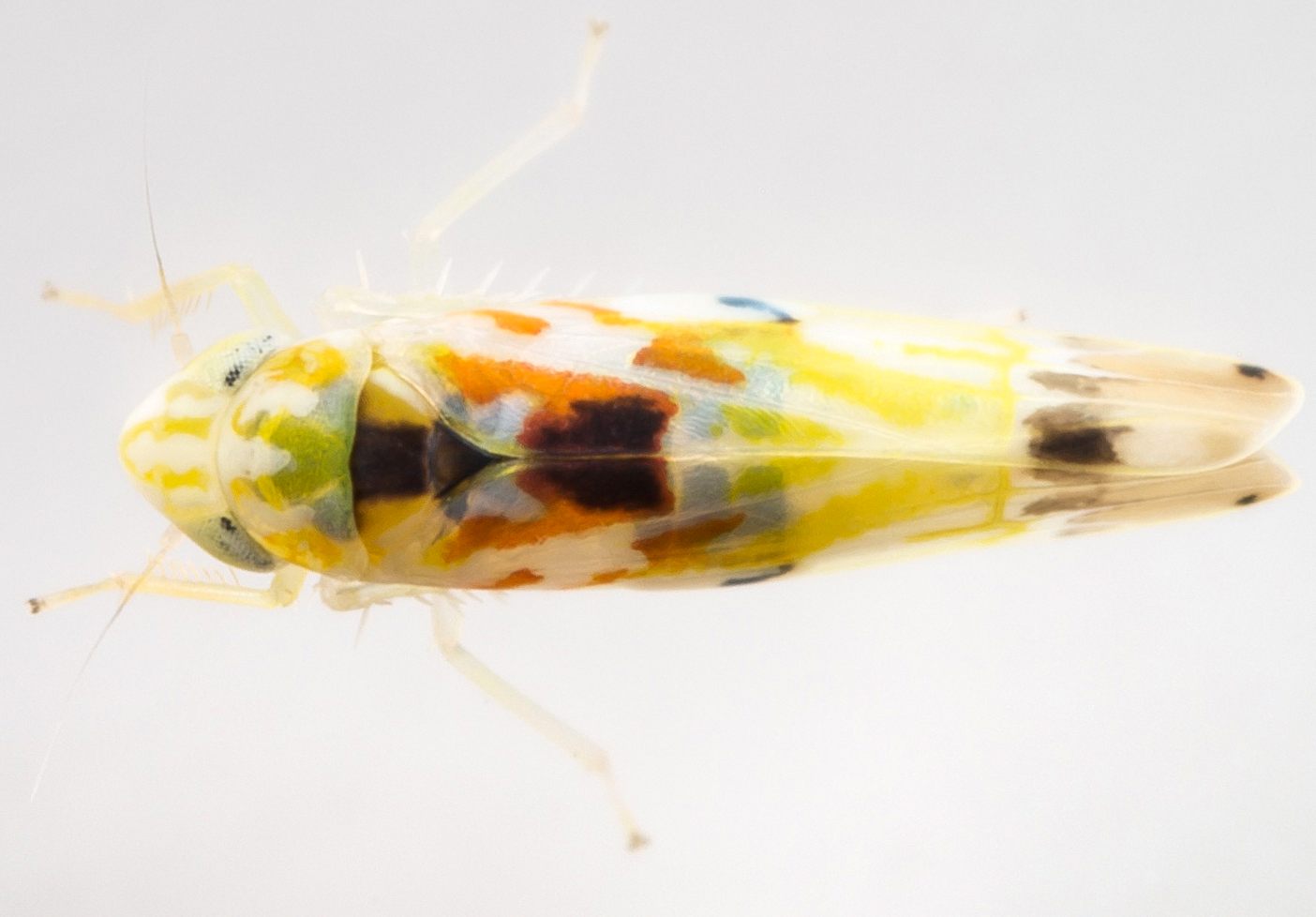| Family (Alpha): | |||
« |
 » » |
| CICADELLIDAE Members: | NC Records | |||||
|---|---|---|---|---|---|---|
Erythroneura octonotata - Eight-spotted Leafhopper | ||||||
 © John Rosenfeld- note color and pattern |  © John Rosenfeld |  © John Rosenfeld- note black areas |  © Kyle Kittelberger- note wing pattern |
|
Hoppers of North Carolina: Spittlebugs, Leafhoppers, Treehoppers, and Planthoppers |
| Family (Alpha): | |||
« |
 » » |
| CICADELLIDAE Members: | NC Records | |||||
|---|---|---|---|---|---|---|
Erythroneura octonotata - Eight-spotted Leafhopper | ||||||
 © John Rosenfeld- note color and pattern |  © John Rosenfeld |  © John Rosenfeld- note black areas |  © Kyle Kittelberger- note wing pattern |